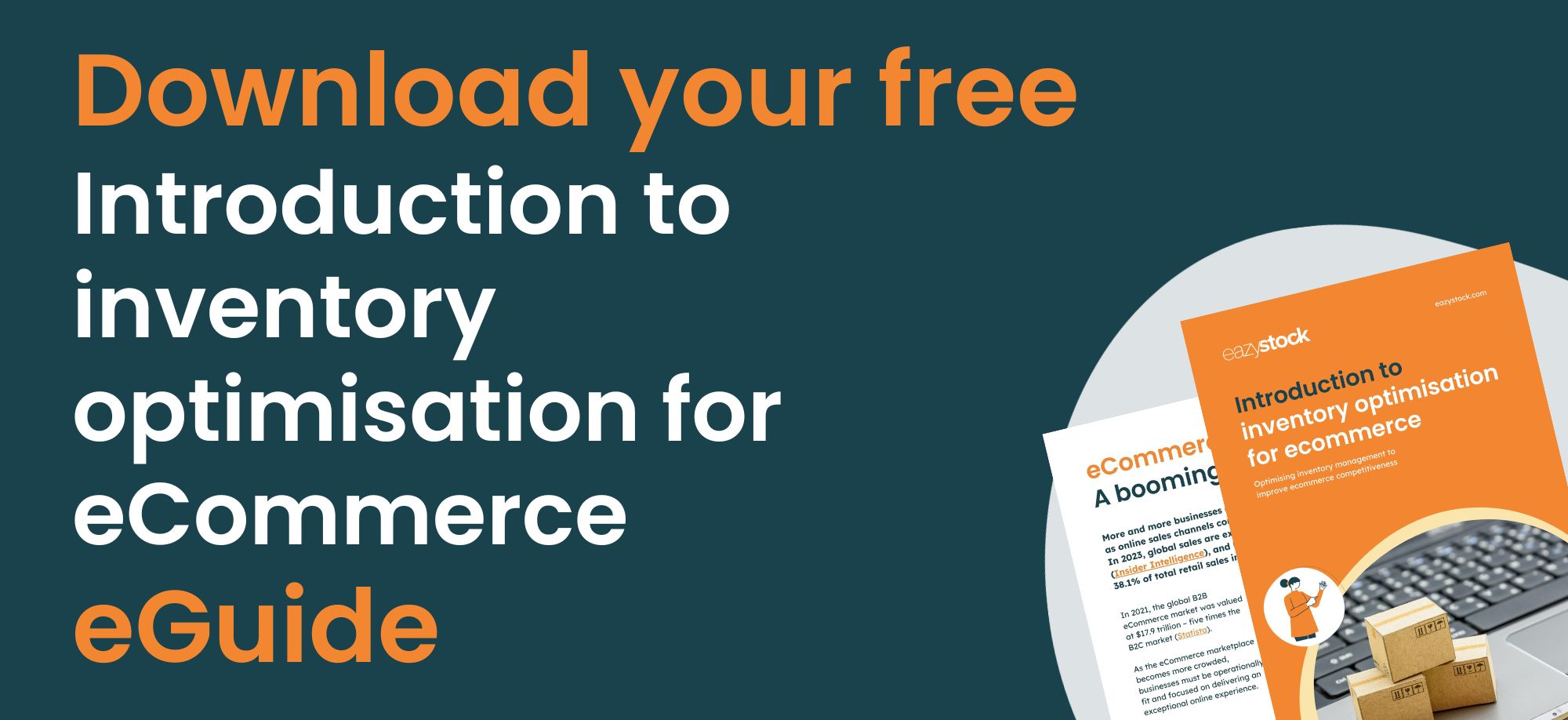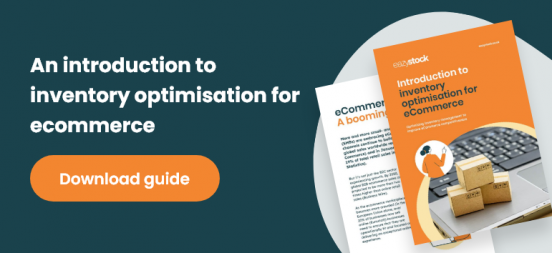How does inflation affect global supply chains?
Supply chain managers and inventory management professionals face a constant barrage of supply-chain crises, with one always waiting around the corner. With every crisis comes the potential for supply chain disruption that can cause chaos for stock-holding businesses. Our eGuide, Supply chain and logistics management trends for 2023, looks at potential issues facing supply chain managers this year and how to respond. In this blog, we focus on how supply chain and inventory management professionals can mitigate the impact of high inflation and interest rates.
Inflation
Inflation has been increasing for the past few years, hitting record levels in 2022. In 2022, the UK and the US saw inflation rates peak at 10.4 per cent – the highest in the UK for 40 years. While they did show signs of reducing, a recent surge has seen levels remain high.
Although The International Monetary Fund predicts that global inflation will fall from 8.8 per cent to 6.6 per cent in 2023 and 4.3 per cent in 2024, these figures are still above pre-pandemic levels.
High inflation rates are seeing price increases for everything from products and components to commodities and utilities, creating a global cost-of-living crisis.
Interest rates
To try and control inflation, central banks will increase interest rates to encourage people to save money. Consequently, this means that they aren’t spending money, which sees demand fall, which should result in costs falling. When demand fluctuates, and costs rise, it can be tempting to throw out long-term strategies to react to these changes. While short-term fixes can be appropriate, it’s essential to consider how those fixes will adapt to future changes in the market so the business remains profitable.
How do high interest rates and inflation impact supply chains?
- More expensive borrowing. Higher interest rates make borrowing money more costly, making financing day-to-day operations such as inventory procurement, transportation and storage more expensive. Increased costs can reduce profits and cause cash flow challenges, impacting a business’s ability to invest in supply chain operations or fulfil orders.
- Supply chain infrastructure investment reduces. High interest rates make it less appealing for businesses to make long-term investments in their supply chain infrastructure, such as building or purchasing new warehouses or storage facilities, updating vehicles and transport or digitalising supply chain systems.
- Demand falls. Interest rates will also impact consumer spending, as they will face more expensive borrowing. This results in lower demand, which will affect the supply chain. As demand falls, businesses need to reduce production or orders, which could mean the same for suppliers further down the supply chain.
- Higher storage costs. When interest rates increase, this can have a knock-on effect on inventory storage costs, such as warehouse costs, insurance, and financing. It’s natural for businesses to try to reduce these costs by reducing their inventory levels. Leaner supply chains and less safety or buffer stock can increase the risk of stockouts if demand fluctuates or there are delivery disruptions from suppliers.
- Global supply chains. High interest rates in one country can impact global supply chains, mainly when countries rely on borrowing to finance their operations. These businesses will then face the same higher borrowing costs, reduced investment, lower demand and supply chain disruptions where companies worldwide rely on them as suppliers or customers.

How can supply chain managers manage higher inflation and interest rates?
While it’s impossible for you to control geopolitical and economic factors, you can control your business strategy. Rather than allowing the Bank of England to dictate your business and inventory strategies, focus on what you can control. This is vital to mitigating the impact of inflation and increasing interest rates.
1. Review your inventory health
Stock levels influence cash flow, so if you have unnecessarily high inventory levels, now is the time to reduce them to avoid tying up capital. As interest rates rise, banks become more cautious about lending money, making it harder to access capital.
Freeing up capital held in excess stock will allow you to invest where it’s most needed, such as staff, resources, or marketing, without taking on a loan at a higher interest rate.
You can review the health of your inventory in several ways, which we discuss in more detail in our free Inventory health self-assessment eGuide.
If you aren’t already, consider analysing and categorising your stock to ensure you hold the products with the most value to your business. This allows you to focus on the products that have the most value for your business to ensure you continue to meet customer demand for those products. One way to do this is with ABC/XYZ analysis, which we explain in more detail in our blog post.
If you do have excess stock, read our guide on how to manage it to avoid it becoming obsolete or dead stock.
2. Understand the resilience of your supply chain
Supply chain resilience means managing day-to-day risk and having systems and processes to adapt to disruption in the supply chain. With a resilient supply chain, your business can absorb the additional stress so that it can recover, whatever the circumstances. With the right systems and processes, you can also forecast and anticipate disruptions to hopefully avoid them altogether.
Resilient supply chains make it easier to respond to disruptions wherever they might occur in the process. Our eGuide, Building a resilient supply chain, highlights the key areas of resilience.
Building inventory and capacity buffers into your supply chain management
Diversifying your supplier network, looking for suppliers closer to home, and building and maintaining strong supplier relationships
Digitalising your supply chain to improve efficiencies.
3. Review your cost and price structure
As the cost of raw materials and components increases, your suppliers will likely pass on these higher costs to you. While fuel prices have decreased, they will probably increase again as oil production slows. Thanks to continually rising energy and utility costs running warehouses and businesses is more expensive.
How can you manage these higher costs? One way is to pass these increases on to your customers to reduce the need to source more capital.
Before increasing prices, review your finances and profit margins to find the best strategy for your business’s profitability. How will higher prices impact customer demand? How are your competitors managing their costs?
How will your team monitor changing customer behaviour and market trends as demand reduces? You need to be able to track changes in demand so your purchasing team can adapt their purchasing plan only to order stock that will sell.
4. Review your loans and long- and short-term funding options and the potential additional costs you will incur
If your business doesn’t have available capital to meet increased running costs because it’s tied up in excess stock, higher interest rates make it harder and more expensive to borrow money, which could impact acceptable levels of debt for your business. You might want to consider non-traditional sources of capital, such as supply chain finance solutions. Supply chain finance works differently from a loan by engaging a third party to extend credit between buyers and suppliers. It reduces the risk of supply chain disruption and ensures that working capital is used efficiently.
Higher costs of debt will also impact your profitability and ability to generate cash flows to cover loans. Reviewing your current finance and loan agreements can help you plan how to finance them going forward. This could be consolidating loans or finding new fixed-term loans to stabilise repayments.
With rising costs and supply chain disruptions, how easily can you recover debts? If you have payment plans with customers, how much do you expect to write off as bad debts? You may need to ask for upfront payments to reduce the chance of non-payment. You should also consider if your suppliers will do the same to cover potential cash flow issues.
5. Support operational efficiency with technology
Implementing automation through inventory optimisation software allows you to take control of your inventory. Inventory optimisation finds the optimal inventory levels that balance the stock you need while keeping capital investment as low as possible.
Inventory optimisation software, like EazyStock, calculates what stock to order, when, how much, and where to place it in your supply network. It uses a statistical approach that considers multiple factors impacting supply and demand variability down to SKU level.
EazyStock calculates demand forecasts considering seasonality, trends, promotions, product lifecycles and demand types. It then uses this data to produce inventory policies and recommend the optimum quantities of each item you should hold.
The software also recommends safety stock levels to ensure you can cover any spikes in demand. It automatically generates daily order proposals that consider demand forecasts, inventory policies, safety stock, current stock levels, reserved stock, goods in transit and back orders, so you can keep your capital investment as low as possible.
Adding automation to your purchasing processes allows you to work with a lower fixed-cost base, master your replenishment and save on stock-holding costs. You’ll be able to purchase more dynamically, allowing you to respond quickly to changes in market demand.
If you think now isn’t the time to purchase new software, consider the impact that not acting could have on your business. The investment in software will be minimal as a percentage of your total inventory investment. When considering the potential return on investment, your investment is essentially zero.
As we mentioned earlier, sacrificing long-term strategies for short-term fixes could negatively impact your business further down the line. We explain more about this in our blog about how not spending money where it’s needed now could end up costing you more in the long run.
Summary
Inflation will always impact businesses, regardless of size. However, focusing on what you can control is crucial to dealing with its effects.
Contact our team for a commitment-free demo if you’d like to know more about reducing capital tied up in inventory and taking your cash flow planning into your own hands instead of it being dependent on bank interest rates and other market conditions.







